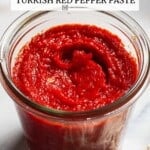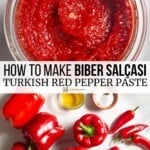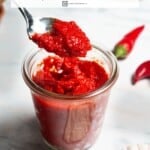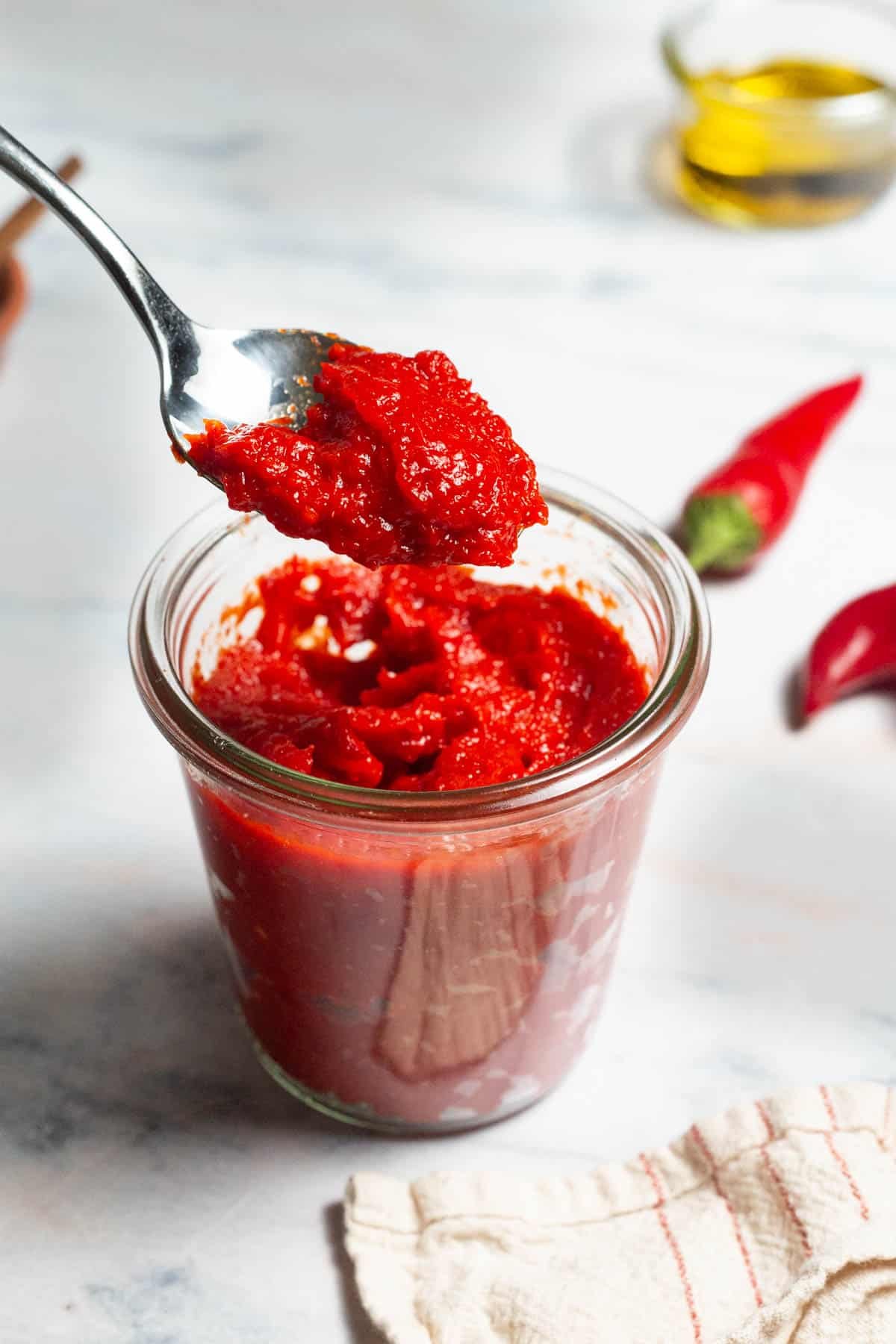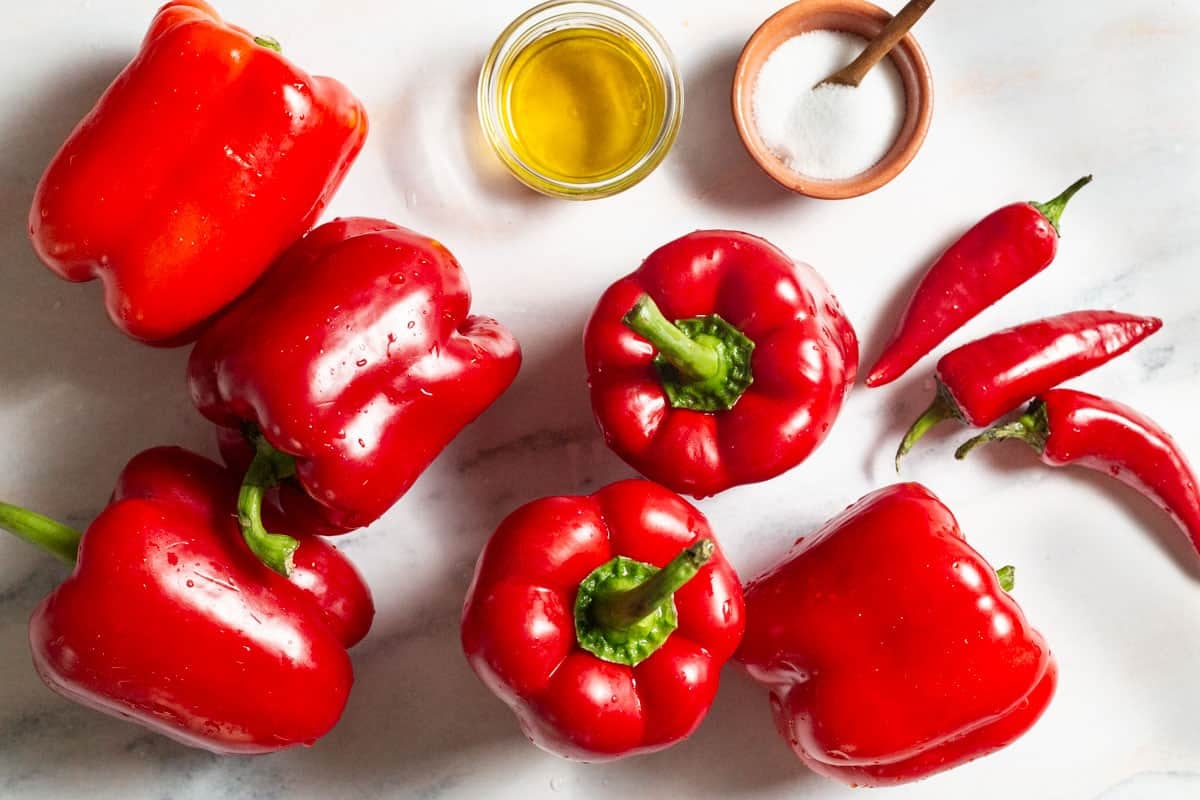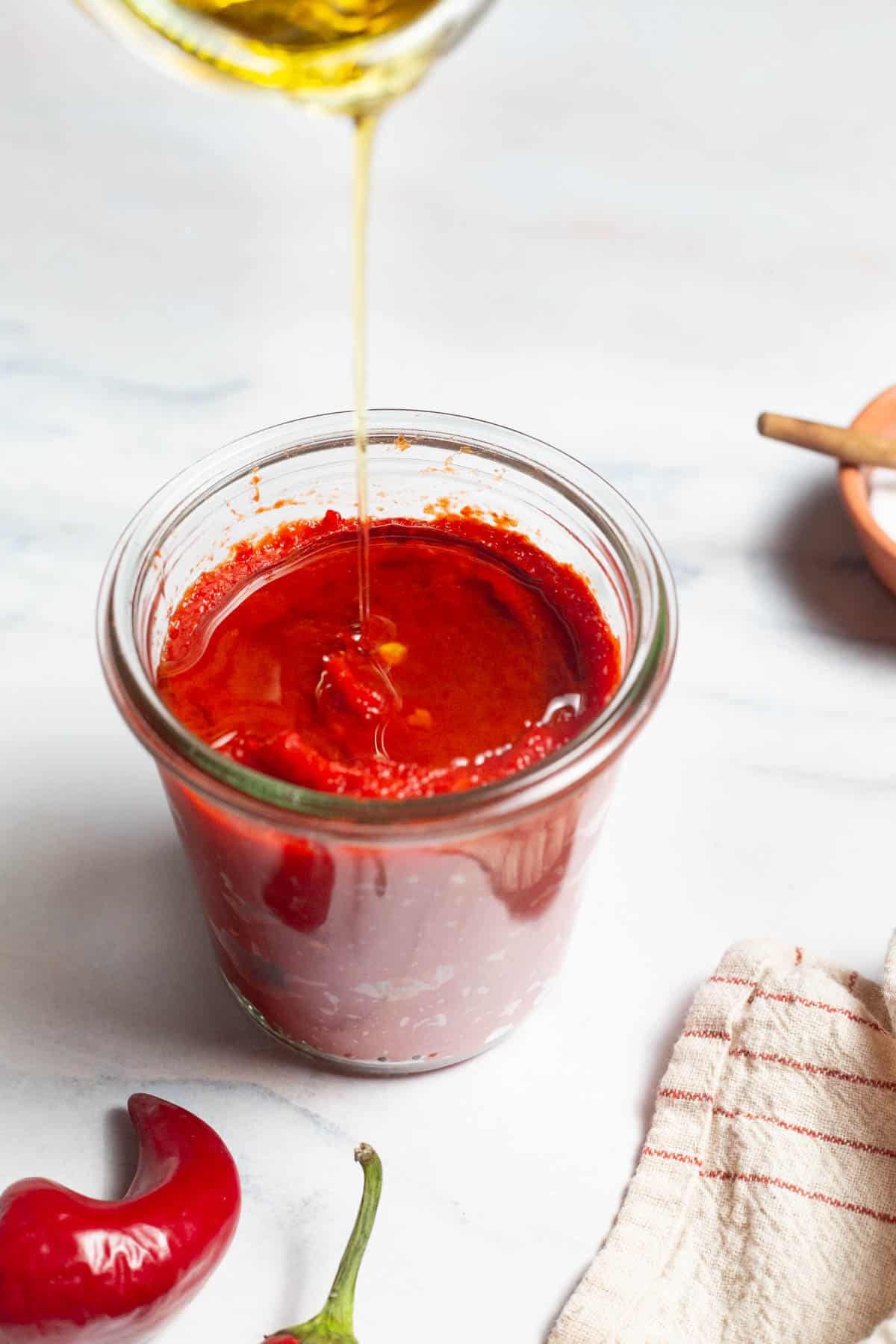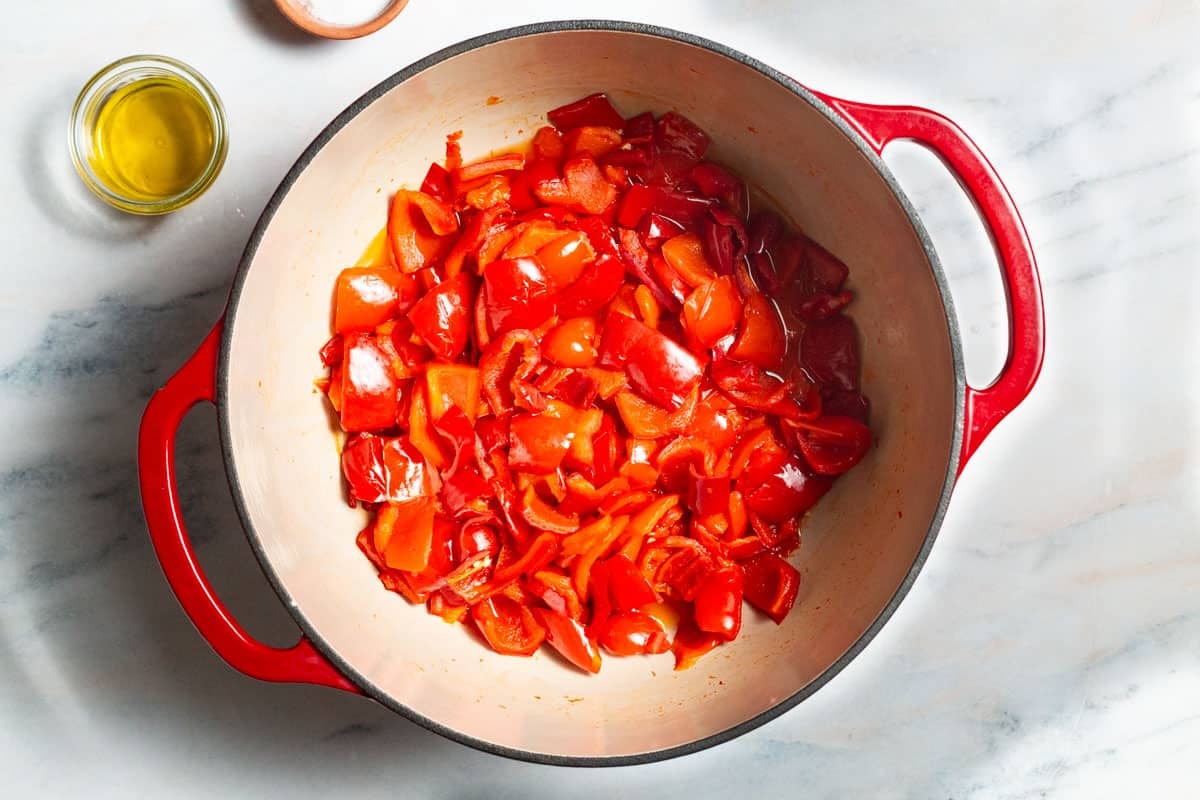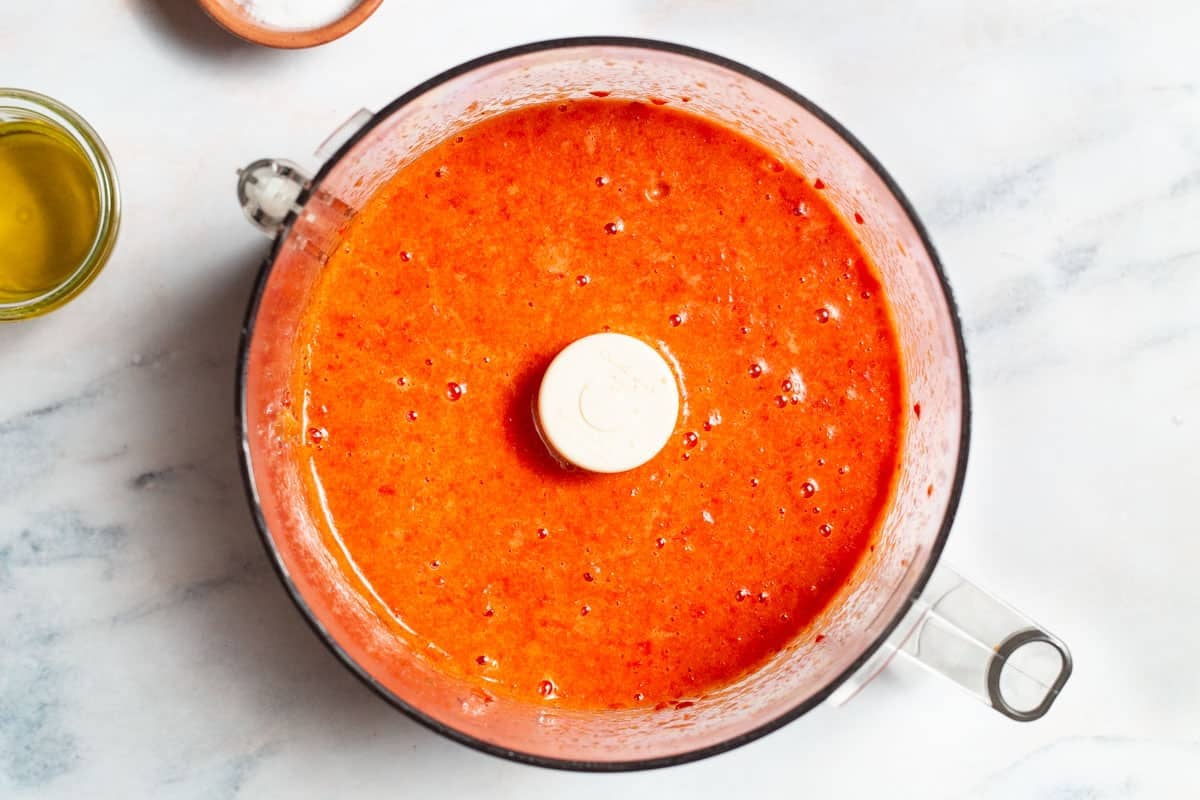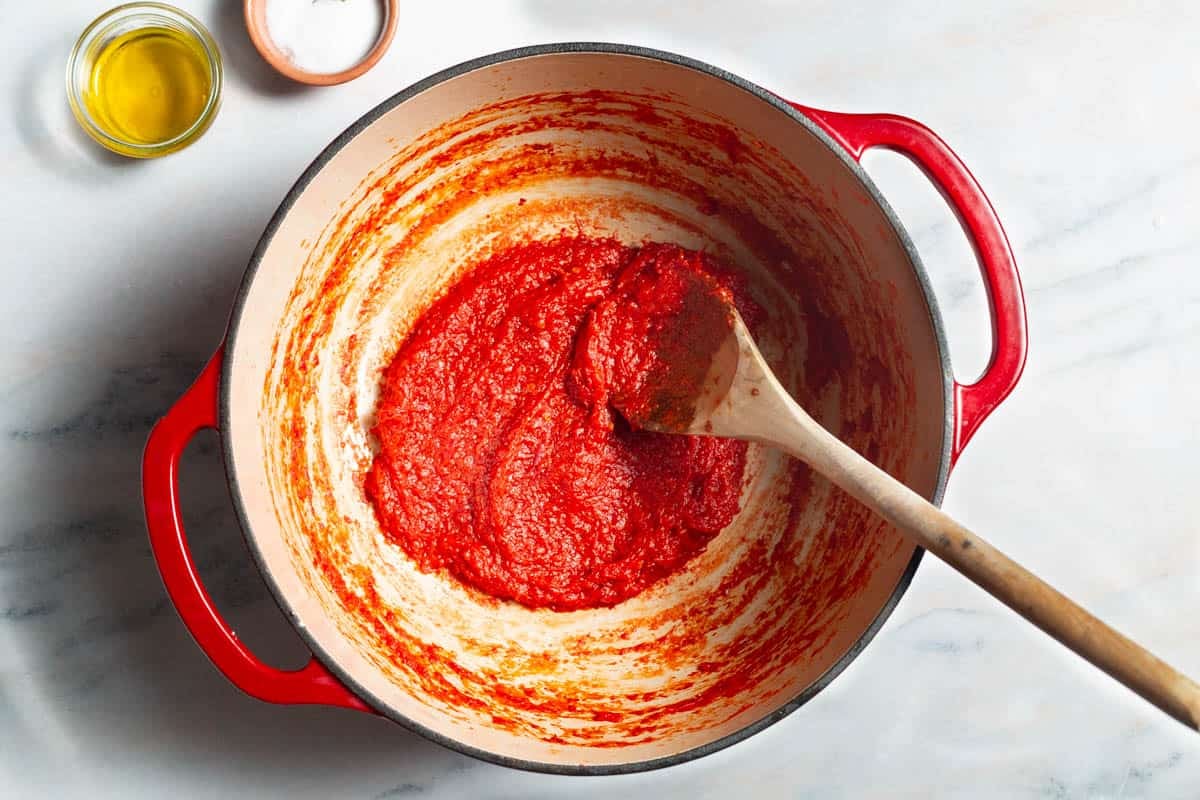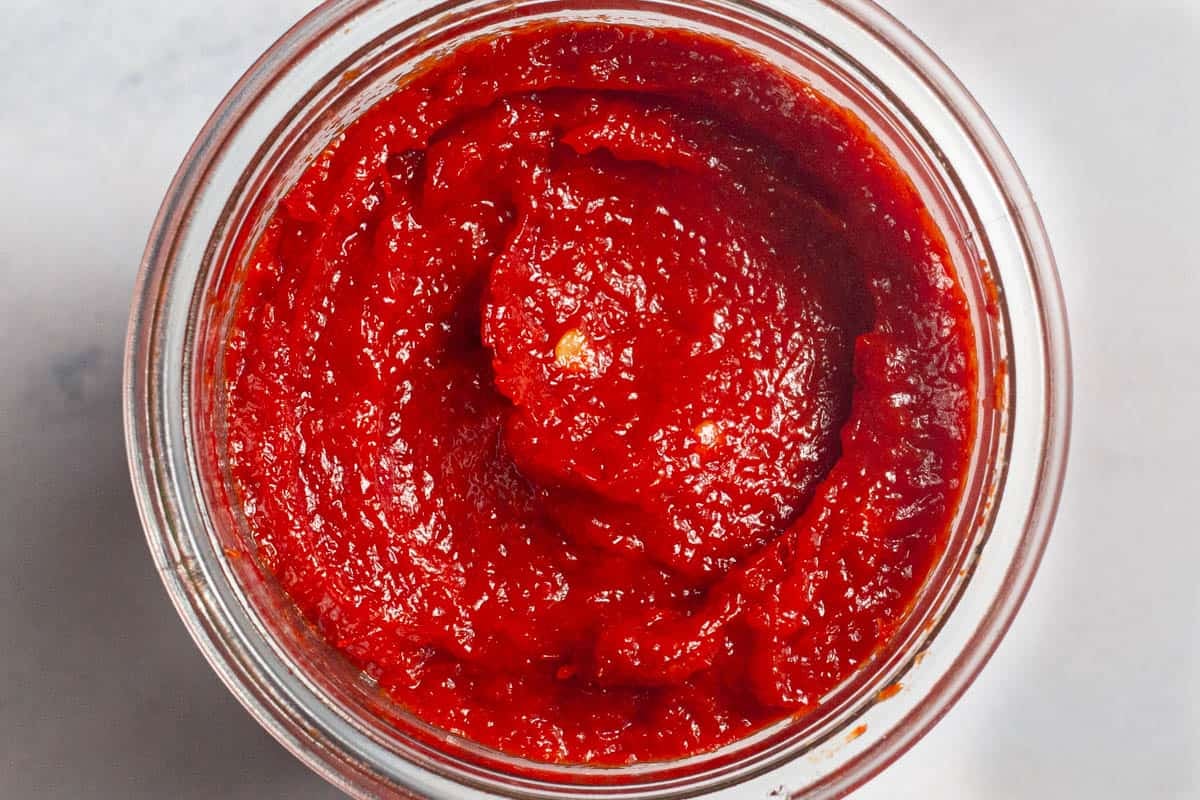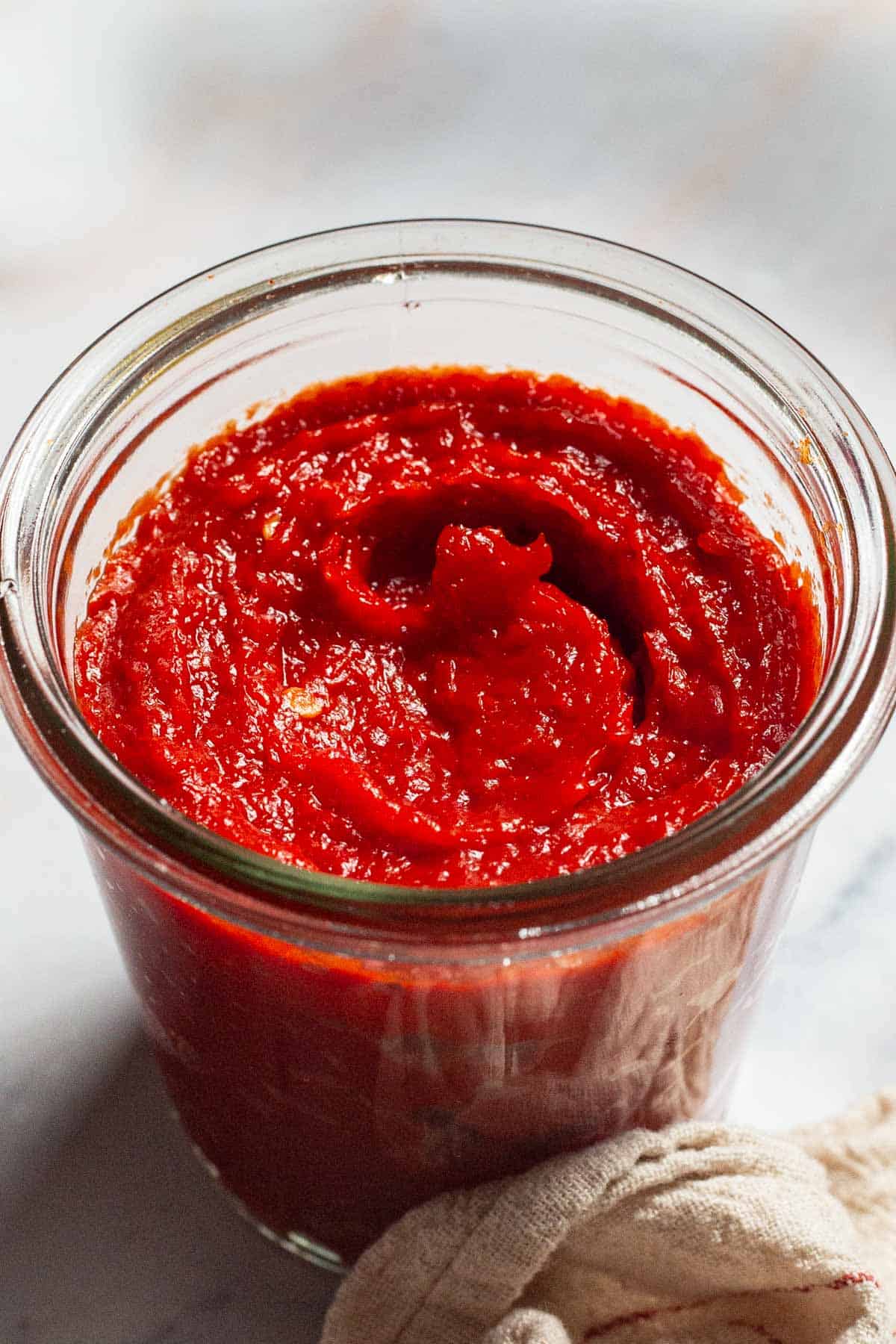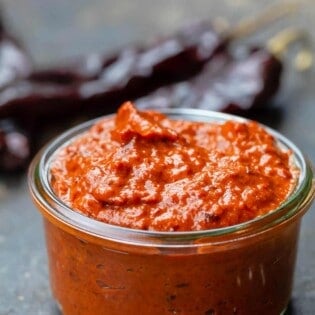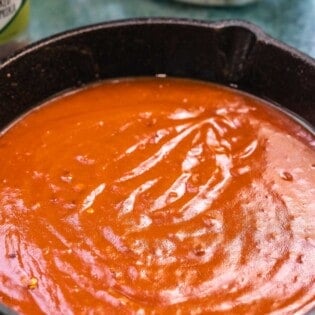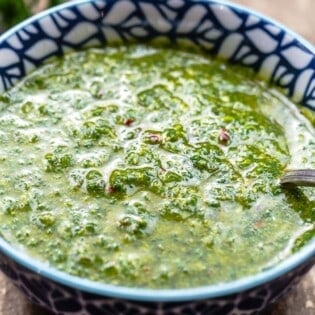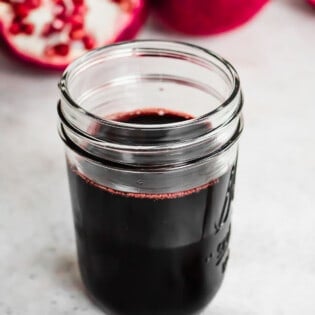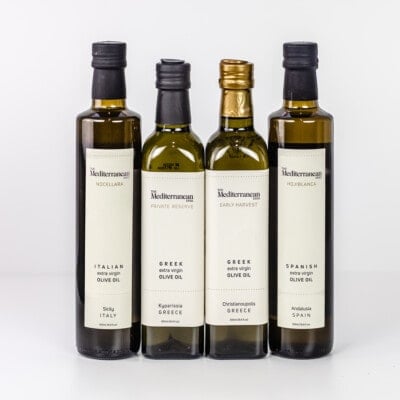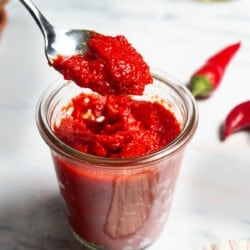Biber Salçası, pronounced “bee-bare sal-cha-suh,” is a fundamental ingredient in southern Turkish cuisine. The word “salça” means “paste” in Turkish. To make this vibrant red pepper paste the traditional way, women dry juicy, pointy red peppers called sivri biber and chilis under the hot summer sun. (Almost every house in southern Turkey makes their own pepper paste in summer time.) Once the peppers dehydrate and we turn them into this robust, flavor-packed condiment—essentially Turkey’s version of Italian tomato paste, Korean Gochujang, or North African Harissa.I am unable to sun-dry my peppers where I live now, so I created a shortcut version using red bell peppers and chilis, and dehydrate them on the stove top. It is still packed full of flavor. Once you make a batch you’ll add it to Turkish Spinach and Eggs, stir it into dips and sauces, use it for Marinated Salmon, vegan Kisir (Turkish Bulgur Salad), or even as a simple spread for bread.
How is Biber Salçası Traditionally Made?
Village women in my hometown of Antakya and Gaziantep region of Turkey get together for this laborious pepper paste making process, which usually takes for 6-7 days. Here is the traditional way of making pepper paste:
The peppers are prepped: Stems and seeds of the freshly picked red peppers and chili peppers are removed, then ground or very finely chopped and processed with rock salt. Then dried: The village ladies spread the mixture out on top of their cloth covered terraces, over very large trays in thin layers, to dry under the hot summer sun. They give the trays a mix daily until the peppers dehydrate. And finished: The final seasoning of salt added to the concentrated, dehydrated pepper paste to preserve it, and then it’s placed in sterilized jars to use all year long.
What Is In Home-Style Turkish Red Pepper Paste?
My homemade version uses ingredients that are easy to find at most any supermarket. You’ll need:
Red (bell) peppers: Juicy red bell peppers or capsicum peppers are the main ingredient in this pepper paste. Make sure you get a firm, meaty variety. Small red chili peppers: I add small red chili peppers to bring a little heat. You can use a few more if you like it spicier. Salt: Flavors and preserves my pepper paste naturally. Extra virgin olive oil: I like to top the pepper paste with a drizzle of extra virgin olive oil, for flavor enhancement as well as for the longevity of the pepper paste. Any of the oils from our shop would work perfectly.
How to Make Red Pepper Paste (Shortcut Version)
There are two commercially available pepper pastes available; Spicy Turkish pepper paste (acı biber salçası) and Sweet Turkish pepper paste (tatlı biber salçası). My red pepper paste has a combination of juicy red bell peppers and a few red chili peppers. It has a nice, spicy kick to it, but not overly spicy. If you don’t like the heat you an always leave out the chilies. Here’s how to make it:
Dry Out the Red Peppers
Get ready: Bring 1 1/2 cups water to a boil. Trim and remove the seeds from 6 red bell peppers and cut into 1 ½-inch chunks. Trim and remove the seeds from 3 small red chili peppers, then finely chop them. Soften the bell peppers. Place the red bell peppers and hot water in a large Dutch oven. Set over medium heat and cook, stirring often, for 25 minutes. Gently press and turn as you stir; They will start to break apart and soften and most of the liquid will absorb. Soften the chili peppers. Add the chili peppers and keep on stirring and cooking over a medium-low heat for another 10 minutes. By the end of this time the peppers will be cooked and the moisture evaporated. Turn off the heat and set aside to cool for 5 minutes.
Blend, Reduce, and Store
Process the paste. Place the cooked peppers in a food processor and process until the mixture is almost a smooth purée (I like a little texture). Reduce the paste. Return the puréed peppers to the pot, season with 2 teaspoons salt and cook over a low heat for a further 30–35 minutes, stirring continuously so the purée doesn’t burn, until the juices have evaporated. The purée will shrink by half and turn into a soft paste. Remove from the heat. Store. Pour the paste into a clean glass jar, and gently push down and shake a little to settle. Top with the extra virgin olive oil and seal with a lid. Allow to cool, then store your prepared paste in your refrigerator for up to 3 weeks.
How to Use Red Pepper Paste
Turkish red pepper paste is my favorite condiment—a little bit of it adds so much depth and flavor to our dishes. Here are some ideas to make the most of your pepper paste:
Enjoy for brunch: I love simply spreading over sourdough bread, topped with sliced olives and a drizzle of extra virgin olive oil. Add a poached or boiled egg over for a delicious brunch! Make dips: Pepper paste is a must in our much loved dip, Muhammara; combined with extra virgin olive oil, walnuts, little bread and onion, it makes a very pleasant dip! Try pepper paste in a variety of dips of your choice. Marinades: Pepper paste is fantastic in marinades, adding richness and depth of flavor. Try marinating your meat, fish or vegetables with pepper paste, combined with olive oil, garlic, and seasonings of your choice, like Aleppo pepper, cumin, and coriander. Soups: Add pepper paste to your soups; it is fantastic in Turkish bulgur and lentil soup, Ezo Gelin Çorbası, or Turkish Red Lentil Soup (Kırmızı Mercimek Çorbası). Sauces: I add a spoonful of pepper paste in my pasta sauces – whether it is vegetarian or combined with meat, it greatly enhances flavor. Try adding a spoonful in this Roasted Red Pepper Pasta. Or use it to make a spiced oil for traditional Turkish Manti. Salads: Pepper paste is fantastic in salads, too, especially in grain and pulses based salads. I add to my Spicy bulgur salad, Kisir, for instance, combining the pepper paste with bulgur, onions, tomatoes, parsley, lemon juice, olive oil – delicious! I also love the depth it brings to Ezme, a spicy Turkish salad-meets-salsa.
Browse All Mediterranean Recipes
Homemade Harissa Recipe (Video)
Bravas Sauce (Salsa Brava)
5-Minute Chermoula Recipe
Pomegranate Molasses
Visit Our Shop Taste your way through the Mediterranean with our signature olive oil collection, including our famous Greek olive oils, Private Reserve, and Early Harvest, plus our new Nocellara Italian olive oil and Hojiblanca Spanish olive oil.
